I don’t have many complaints right now about my new short-term lifestyle in Matagalpa for the next five weeks. We love our rented house (especially cooking in the outdoor kitchen), the new friends we are making, the mountain scenery, the hiking and the cooler fresh air. However, there is one BIG exception in my level of enjoyment… the cold showers. Let me first just say that I have been taking cold showers now for 6 weeks in Nicaragua without a complaint. But in Matagalpa the water is different... oh, so different. Because the elevation is much higher, the temperature is cooler and obviously the water supply is also a drastic drop in temperature in comparison to what we’ve been used to. Just picture what it’s like when you dip your toe in a high-elevation mountain lake- that’s what we have to submerge our bodies in each day. It was especially difficult this last week showering earlier in the morning at 6:30am, and with the rainier, cooler week we had. The only funny thing about this is when Travis is in the shower and I get to hear him shout out and howl each day in shock of the cold. It totally cracks me up to hear his squawking from the other side of the house. For my husband who never seems to feel a hint of cold, even this has been quite challenging for him.
So, I have a few more details to share related to our new home residency. We can’t begin to tell you what a joy it is to unpack our clothes in drawers, hang things on hangers, and have the suitcases far hidden from our sight. It’s even more fun to buy seasonal food in the local markets and stock our pantry with favorites. Although there are well-equipped supermarkets here where we can buy most of the American cooking staples (except decent salad dressings, affordable olive oil, or cereal that hasn’t been imported with sky-high prices), visiting one of the 2 city market places is much more interesting and super cheap. Everything from fruits, veggies, spices, oils, meats, cheeses, tools, toiletries, etc… can be purchased from the multiple vendors packed in about 3-5 square blocks of covered or open-air stalls. If you look past the millions of flies buzzing around the produce (all can be washed or boiled off), and stay away from the un-refrigerated meats (we can’t stomach even walking near these stalls), you can come away with all you need and a little culture tucked in.
Last week we made several little trips to these markets, and never spent more than $6-10. Every morning I cut up fresh pineapple, papaya and cantaloupe that we’ve purchased to go with our breakfasts. The bananas and green mandarins (although green, they’re sweet and wonderful!) are also a favorite. They have a variety of unique squashes here- like chayote, yucca, and several other varieties that have been interesting to try in different dishes we’ve cooked. We also took a stab at buying and cooking the three, absolute Nica essentials this week- rice, red beans and plantains. Travis would like to make a few more attempts at perfecting his gallo pinto, but his sautéed plantains were absolutely superb. We buy our chicken at the supermercato, where we can buy two huge fillets for $2.50. This chicken is so tender and fresh; the actual birds must loose their heads the same day they appear at the market. Travis’s only frustration when cooking it is that he hasn’t figured out how to “brown the chicken” like at home because it’s so juicy. Oh well- it tastes incredible.
Going along with the responsibilities of us now “taking care of house” for a time, we also have the task of doing our own laundry. As we’ve been on the road now for months, dealing with our laundry has been one of our least favorable activities when you don’t have access to your own laundry facilities. In Spain, we were lucky enough to have our own washing machine; we just had to adjust to hours of hang-drying everything within the humidity. As we traveled with Pueblo Ingles, then through Portugal, Morocco and London, our laundry passed through many different hands in various hostels who did it for us, or full service Laundromats. When no service was accessible, our clothes were hand washed by us in the bathtub. In Granada, we paid our language school for the laundry service they offered, but other times we took it to a local “launderia” for faster service. This was an interesting, hodpodge family-run business. Basically, because this family is fortunate enough to own a washer and dryer, they’ve opened up their doors and can call themselves an operating business. Although we really liked how she washed our clothes (they smelled good and weren’t stretched out from being hung dry), each time we retrieved our laundry, we had to deal with the fact that she’d always forget to include one or a few items in our bag. After first thinking the family had claimed some of our clothes to now be their own, or that she had mistakenly returned our clothes to the wrong people, we’ve been relieved every time we’ve returned to find those remaining pieces still there.
So now that you know the thrilling ins-and-outs of Travis and Trisha’s laundry on the road, let me explain our newest quest with our laundry. Here in our house we have a “lavabo,” a specially made laundry sink that all houses have here. The “washboard” (where you scrub) actually makes up the surface of the left side of the sink, and the deeper sink basin is on the right. Both sides have a drain, but the waterspout only reaches over the right side, making it impossible to get water on the other side unless you use additional buckets and pitchers of water to transport it over. Travis and I have made several attempts now at figuring out the best system to soak, scrub and rinse our clothes. With unfamiliar types of detergents and our desire to not use or waste too much water (having water is a privilege here in Matagalpa- in the summer months it is so dry the people need to live off of their reserved supplies), this has been challenging. I also can’t leave out the fact that this is backbreaking work! We commend all the women here who spend hours a day washing the clothes for their families. Those who live in the campos (farms in the mountains) come down to the river and do it there. Despite all these laundry challenges, you rarely see a Nicaraguan who is not freshly washed, wearing sparking clean and well-pressed clothing. Personal cleanliness is a big thing in their culture here.
So, to shift gears here from some of the silly details of our home life …. our English language teacher training has proved so far to be an interesting aspect of our time here. For the first time this year in the various English teaching we’ve done, we’ve actually been given a very precise teaching curriculum and a specific methodology of how we are to instruct our new students. Every day in training we have many opportunities to practice this new regimen with our fellow colleagues, which is definitely needed to memorize these unique techniques. This is quite a contrast to our last two placements, in which all we were given to begin was a room to teach in and a dry-erase board with a marker. Although we have yet to see if this job at Academia Europea will fulfill all of its’ promises (two full classes of students each night of the week and all day Saturday, free Spanish lessons for the teachers, and a decent paycheck at the end of the month), we’re committed to our second week of training and optimistic about our jobs ahead. The only reason we’re a little skeptical is because this academy is brand new in town with its opening house this weekend. Although it’s extremely successful in other Central American countries, Travis and I are not convinced the same will be true with this community of people in Matagalpa. Then again, what do we know? Our classes might be filled to the brim with students!
Even more interesting than the training itself has been getting to know the other teachers. Surprisingly, we are the only native English speakers of the bunch. Of the seven or so of us, all come right from Matagalpa with the exception of one from Managua. However, they’ve all spent various amounts of time in the states or other countries picking up their 2nd languages (German will also be taught at this academy by two of the teachers). Despite this fact, I’m not surprised this academy director wanted us so desperately to teach at the academy. Having native teachers is definitely an advantage for the students… as the others definitely do not speak with perfect grammar or an un-accented flow of speech. This is probably a reason why the academy rotates the teachers to instruct different classes each week. With this approach, the students learn to get used to different voices and accents, and therefore will be more accustomed to understand all styles of spoken English.
So, overall we’ve had a kick of a time each day getting to know these interesting Matagalpan teachers, who are kindly welcoming to us Americans and abundantly friendly at the core. We’ve found this to be true in many of the locals here, and, as we did in Spain, we are rapidly building a new little community with our neighbors and the people we frequently see in the nearby restaurants and markets. With our jobs starting next Monday and our schedule already filled up with our afternoon volunteering and language intercambios, we feel we’ve settled in rather nicely here.
Tuesday, January 20, 2009
Subscribe to:
Post Comments (Atom)
About Us
Spain

Excursion to Toledo

The Toldeo Cathedral

....supposedly one of the most beautiful in all of Europe

The city (the former capital of Spain) is on top of a hill, surrounded by a stone wall


the narrow city streets were an adventure to walk on

lovely city streets...

The top of a mosque
The "Bullet Train"

This high speed train runs over 200 miles an hour! We traveled a distance of 100 miles in 30 minutes flat. Amazing.

Excited for our first trip outside of Madrid

Another typical plaza in the center of the city. As usual, late in the day all the folks gather together and sit and catch up on their days. Very pleasant!

I loved watching this sweet elderly man pacing the square. Looks like he might have benefited from drinking more milk though in his younger days!

Our first "Menu of the Dia." This is my 1st course of their famous gaspacho- served more pureed and smooth here than how we make it in CA...

a view from on top of the city


love the flowers and shadows
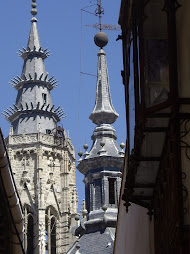
The Packing Nightmare!

We actually lived amongst this for several days!
Down to the last load...

Goodbye to our apartment... now we're homeless!


















































































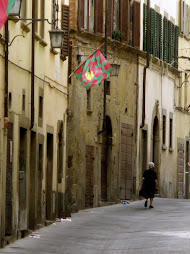















































































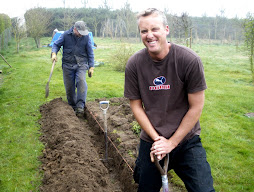
























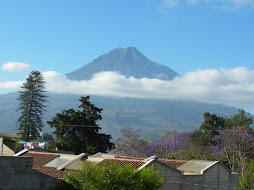









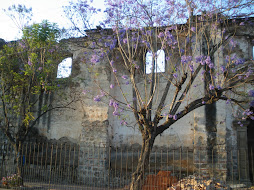


























































































































































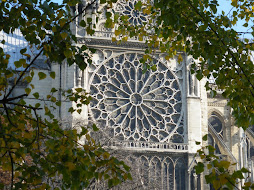





































































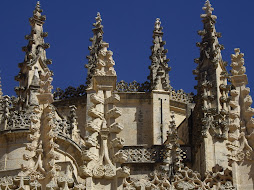









































1 comment:
Post a Comment